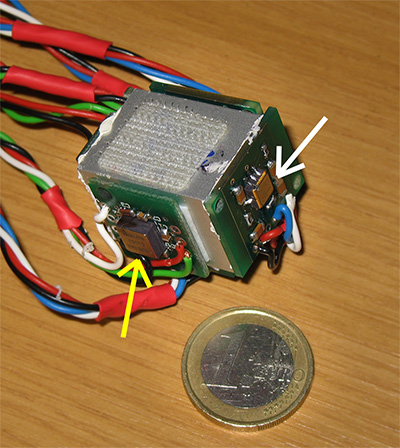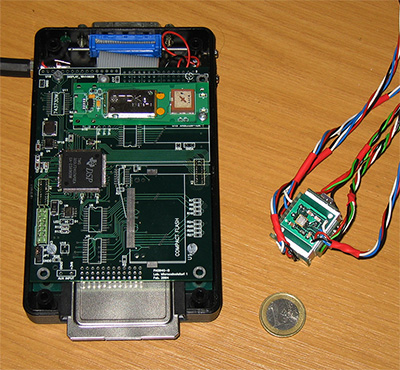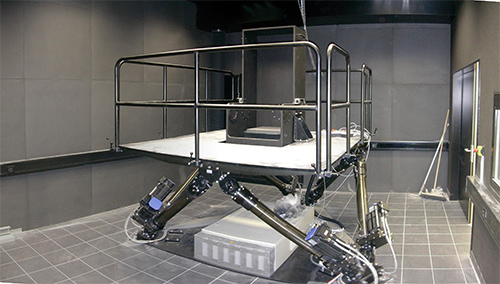Movement SensorsWithin the REGINS-project LOTO, the group from Pavia has developed a new, small and light-weight sensor for the recording of linear accelerations and angular velocities during natural head movements. This new sensor incorporates three BGA (Ball Grid Array) gyroscopes (one of them indicated with the yellow arrow), which accurately measure angular head velocities = 300 deg/s, about arbitrary axes in space. Linear accelerations are measured by three approximately orthogonal MEMs-accelerometers (white arrow), which detect accelerations of ±2g. In addition, linear accelerations along the vertical Z-axis are also recorded with a ±5g accelerometer, for very high accelerations that saturate the regular accelerometers. The new sensor measures only 3.5 × 3.0 × 2.8 cm, and can be easily mounted on the head with simple Velcro straps. |
 |
 |
Bluetooth Data TransmissionTo further improve the quality of the experimental data, and to allow the subjects to behave as naturally as possible during the recordings, we have developed a lightweight Bluetooth module for wireless data transmission to a laptop computer close by. The Bluetooth transmission system includes a digital signal processor that samples the 11 data channels from our sensors, and sends these data to the laptop running the acquisition. |
ExperimentsData have already been recorded from subjects walking along naturally, walking fast in a straight line, or walking around corners. These data are now used to find out which stimulation patterns are elicited in the balance system by such movements (see also sub-project “Otolith Simulations”). In addition, we have started with experiments on the new hexapod at the Dept. of Neurology, UniversityHospital Zurich. |
 |
DataSo far we have recorded 3d-linear and 3d-angular accelerations, during walking and/or during running, in 8 subjects. The experimental data are publicly available, under http://bioing.unipv.it/headloto/headmain.aspx |





